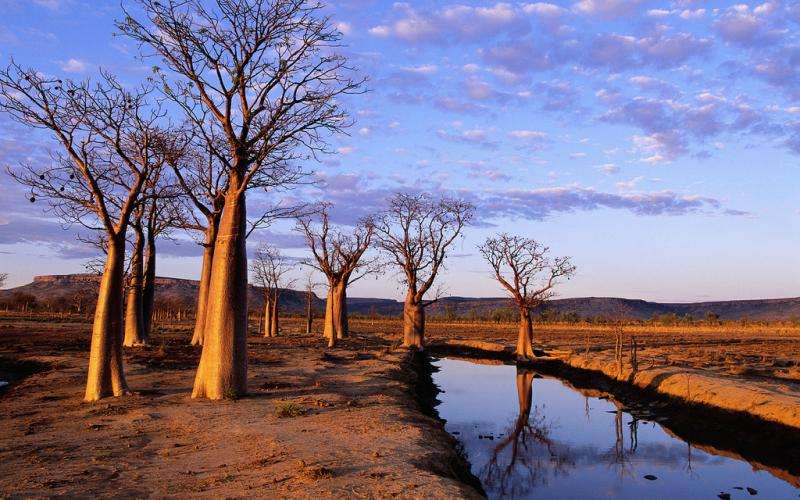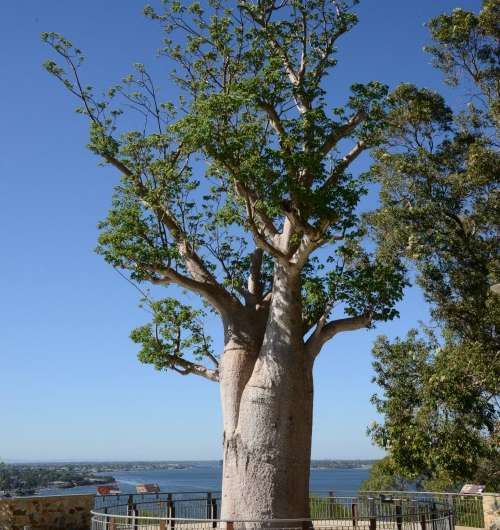Popular boab tree is fighting fit

At 750 years old one could be forgiven for having a few ailments but a recent health check of King's Park's mighty boab tree Gija Jumulu has revealed the popular tourist attraction is in perfect health.
The tree's clean bill of health comes after a serious scare as a delayed result of the six days Adansonia gregorii spent lying on its side on the back of the truck that transported it from the Kimberley to Kings Park in 2008.
"The tree's overall health, including root growth, canopy growth and flowering, have all been closely monitored since its move to Kings Park," King's Park Aborist Jeremy Thomas says.
"It has returned to full strength remarkably quickly, though it still wears the scars of its journey."
Kings Park arborists first noticed in 2010 that the magnificent 20 tonnes boab tree was becoming covered on one side with pockets of dying (necrotic) tissue.
In 2010, the researchers decided to remove the decaying sections and they were amazed by what they found underneath.
"We removed that necrotic tissue, about two inches deep, and we found fresh callous material growing underneath," Mr Thomas says.
"So we could see the tree actually responding to these wounds. We made the decision to scrape away all of that neurotic tissue, leaving the pockmarks that are there now."

The tree, which could live to 2,000 years or more, was transported 3,200km from the town of Warmun in WA's far north.
Kings Park received permission to remove the tree from Warmun as it was in the way of a bridge being built by Main Roads over the Great Northern Highway.
The researchers knew boab trees have an incredible resilience to root loss and trauma, and were confident the operation would be a success.
But, when dealing with living organisms, there is always an element of risk, he says.
"Bringing boab trees so far south, climate also is a major challenge" Mr Thomas says.
"When we're experiencing wet winters, the boab is having its dry season. Water retention around the roots, is one of the great killers of boab trees, they rot very easily above and below the ground."
"We expected to see a regression in the canopy. But within the first year we saw the first flower buds."
The boab is expected to flower for a few short days this month.
Provided by Science Network WA
This article first appeared on ScienceNetwork Western Australia a science news website based at Scitech.
















